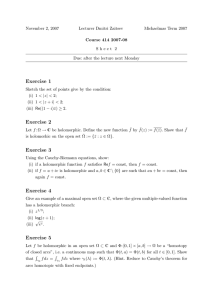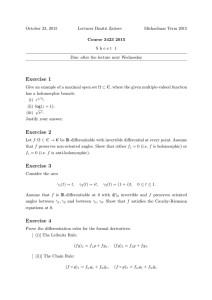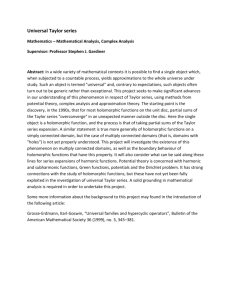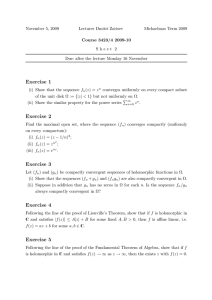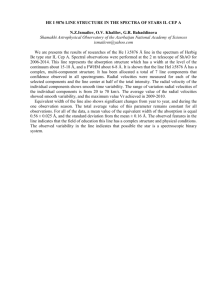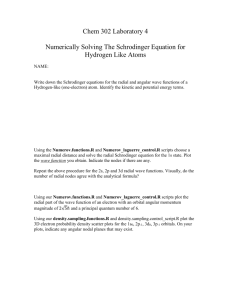In 1925, Lusin and Privaloff proved that if a holomorphic... on the unit disk D has radial limit 0 at...
advertisement
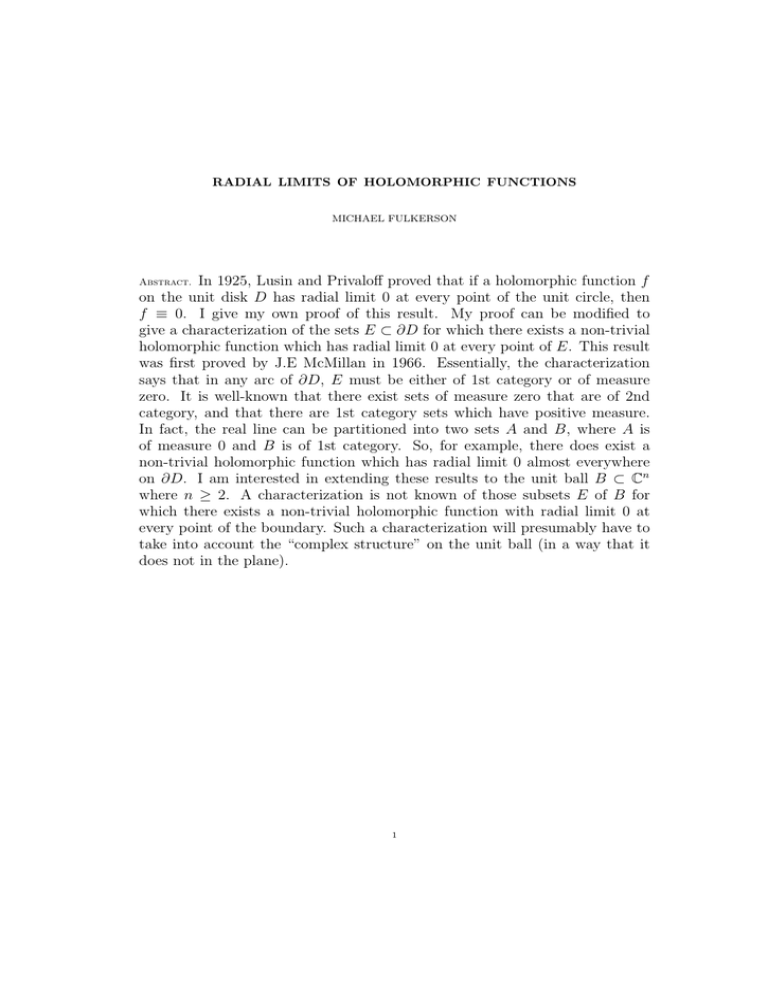
RADIAL LIMITS OF HOLOMORPHIC FUNCTIONS MICHAEL FULKERSON Abstract. In 1925, Lusin and Privaloff proved that if a holomorphic function f on the unit disk D has radial limit 0 at every point of the unit circle, then f ≡ 0. I give my own proof of this result. My proof can be modified to give a characterization of the sets E ⊂ ∂D for which there exists a non-trivial holomorphic function which has radial limit 0 at every point of E. This result was first proved by J.E McMillan in 1966. Essentially, the characterization says that in any arc of ∂D, E must be either of 1st category or of measure zero. It is well-known that there exist sets of measure zero that are of 2nd category, and that there are 1st category sets which have positive measure. In fact, the real line can be partitioned into two sets A and B, where A is of measure 0 and B is of 1st category. So, for example, there does exist a non-trivial holomorphic function which has radial limit 0 almost everywhere on ∂D. I am interested in extending these results to the unit ball B ⊂ Cn where n ≥ 2. A characterization is not known of those subsets E of B for which there exists a non-trivial holomorphic function with radial limit 0 at every point of the boundary. Such a characterization will presumably have to take into account the “complex structure” on the unit ball (in a way that it does not in the plane). 1


